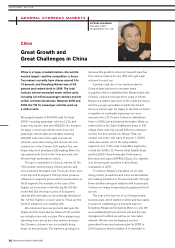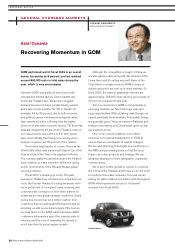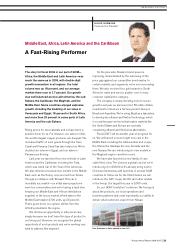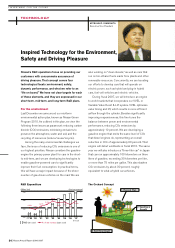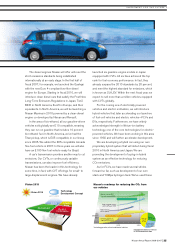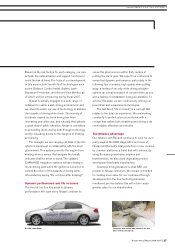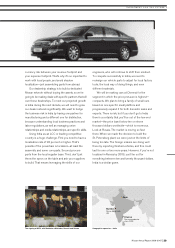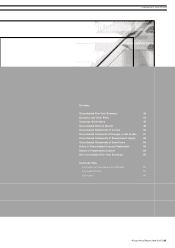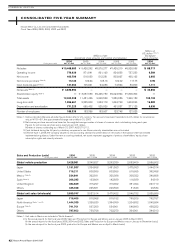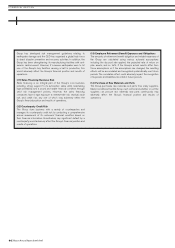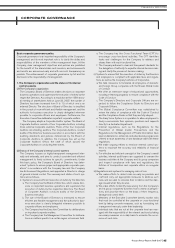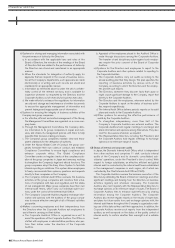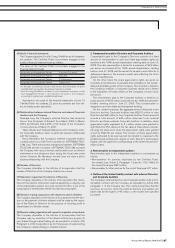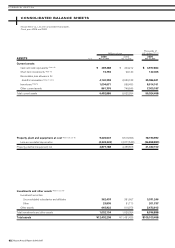Nissan 2007 Annual Report Download - page 40
Download and view the complete annual report
Please find page 40 of the 2007 Nissan annual report below. You can navigate through the pages in the report by either clicking on the pages listed below, or by using the keyword search tool below to find specific information within the annual report.
Nissan Annual Report 2006-2007
38
Strategic and Competitive Market
CARLOS TAVARES
Executive Vice President
»INVESTMENT FOR THE FUTURE
INDIA
The Indian market is as strategic for Nissan as
China was five or six years ago, and all our
decisions are based on that view. It’s a crucial
market for the future and we are investing
there for the long term. Driven by strong GDP
growth in India, we expect the total industry
volume to double to over two million units
annually by 2011.
While India isn’t the most competitive market in
terms of number of players, it is perhaps the world’s
most price-competitive one. It’s a very protected
market, and highly strategic because of this huge
country’s potential. Due to the high import taxes,
you cannot import finished vehicles unless they are
near-luxury cars. We are now importing the X-TRAIL
and the Teana. However, to achieve long-term
growth and sustainability in a market like India, you
clearly cannot sell high volumes unless you
manufacture locally.
In the car world, the B and C segments still have
the biggest growth potential. We will be facing
Korean and other Japanese competitors at first, but
also going up against strong local manufacturers that
have been in business for decades. The market
leader holds a 50 percent share and imposes pricing
pressure on the other players.
For near-luxury cars the market is much more
open, but the volumes are small—between 1,000
and 10,000 cars annually, even with four or five cars
in your portfolio. You can begin building your brand
strategy and image with near-luxury models, but that
won’t build a complete and profitable business. At
some point you need to push the higher-volume cars
by making them locally.
For that reason, we’ve signed a memorandum of
understanding (MOU)—with Mahindra & Mahindra
and Renault to create a manufacturing joint venture
in Chennai. The three partners signed another MOU
with the Tamil Nadu government that secures an
incentive package for the JV. Constructing such a
deal ordinarily takes six to twelve months, but we did
it in less than three. That was only possible because
of the Renault-Nissan Alliance and the already
strong dynamics between Renault and Mahindra.
We will be making two kinds of investments in
Chennai, including some purely related to the JV and
others in assets that Nissan will own. The JV’s scope
will probably be limited to manufacturing, the land,
the power plant, and perhaps the stamping
workshop. All three partners are investing in the
welding lines, painting booth, trim and chassis lines,
however, and to date we’ve jointly committed more
than 900 million dollars.
The growth in exports will be much steeper than
for domestic sales, so initially we’re planning to use
Chennai for exports. Our strategy is to pursue a two-
step manufacturing approach, starting with one
dedicated line at a plant capacity of 30 jobs per hour,
which translates into 180,000 units per year. If
everything goes well, we will go up to 45 or even 60
jobs per hour within three or four years. Although our
plans for using India as an export base aren’t
finalized, potential targets are mature markets such
as Europe, the U.S. and Japan.
Nissan will be entering a new price band through
India. If we are frugal in the way we engineer,
manufacture, and distribute our cars, we can
compete effectively with Chinese manufacturers.
That means leveraging the multiplier effect by
combining excellent design-to-cost engineering with
a well-designed supplier footprint, the most
economical marketing and sales activity—in terms of
fixed market expenses and direct incentives—and
great logistics. In the entry-car world, only the people
who excel in all those areas can survive.
Using the local supplier base is cost-competitive,
and for vehicles sold locally, you’re decreasing the


